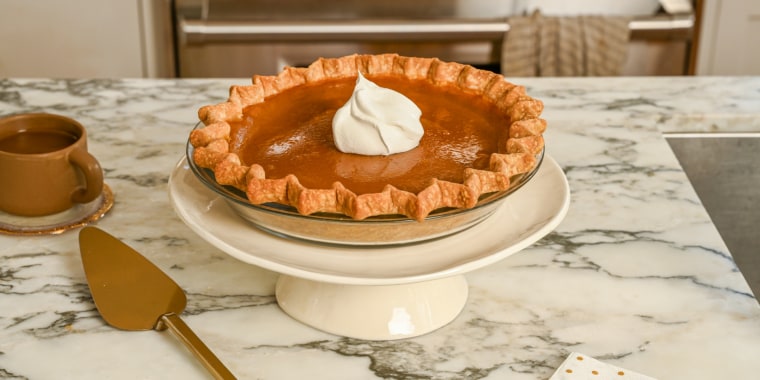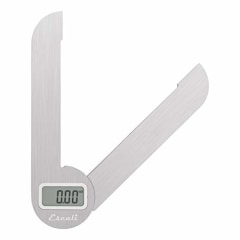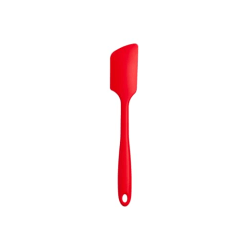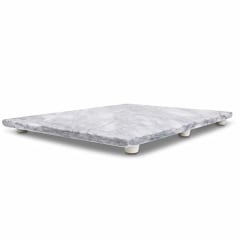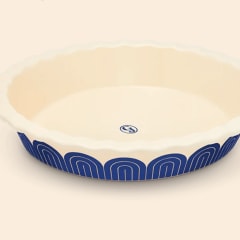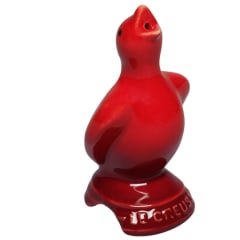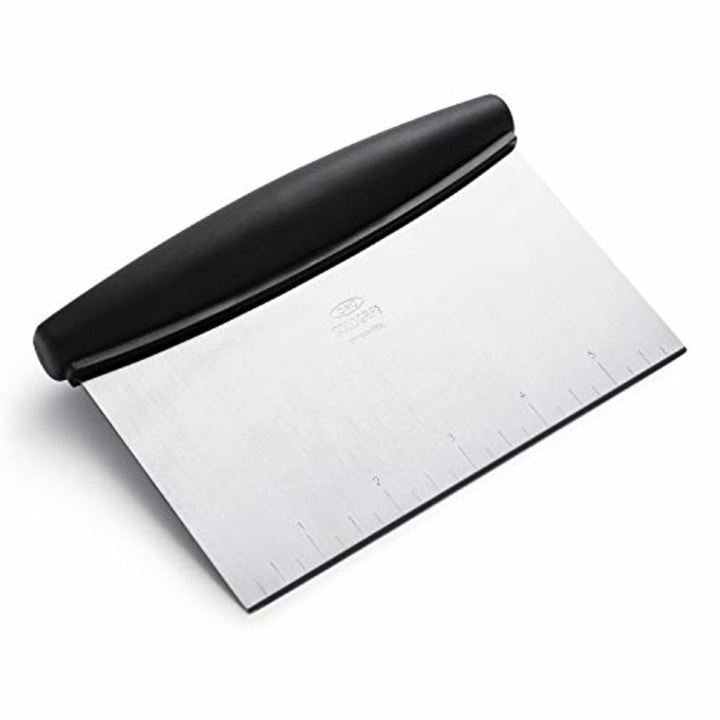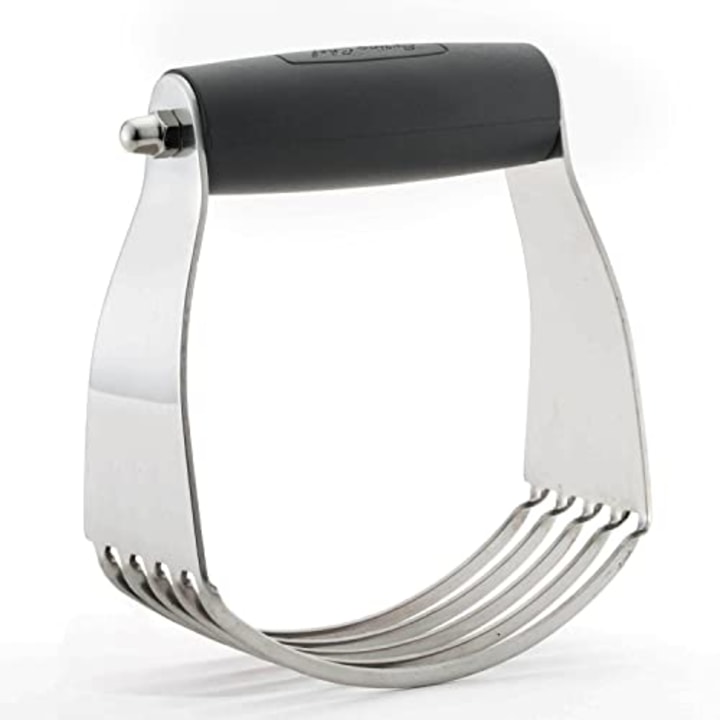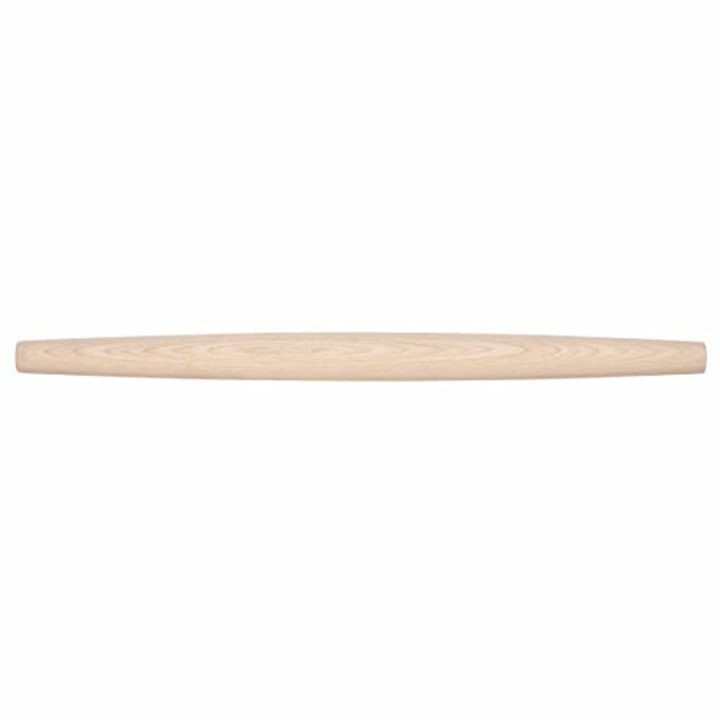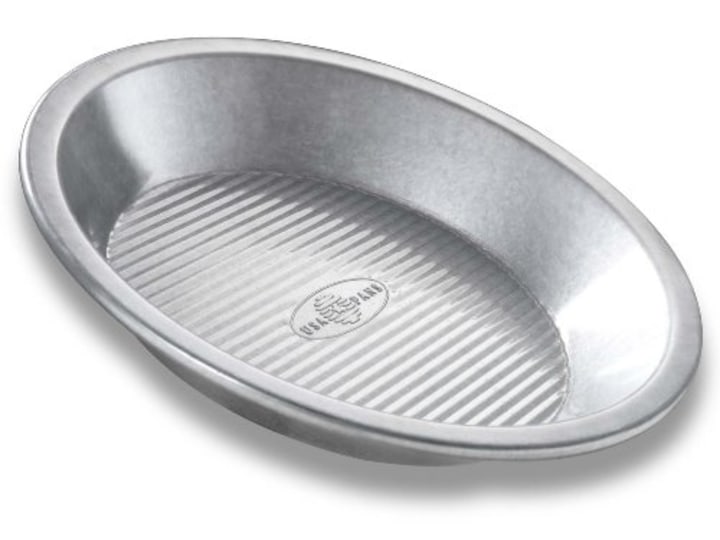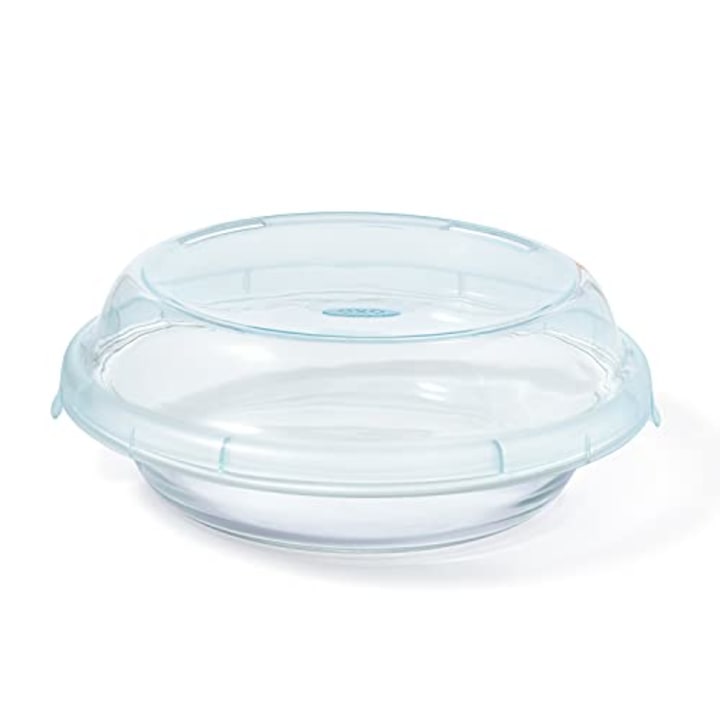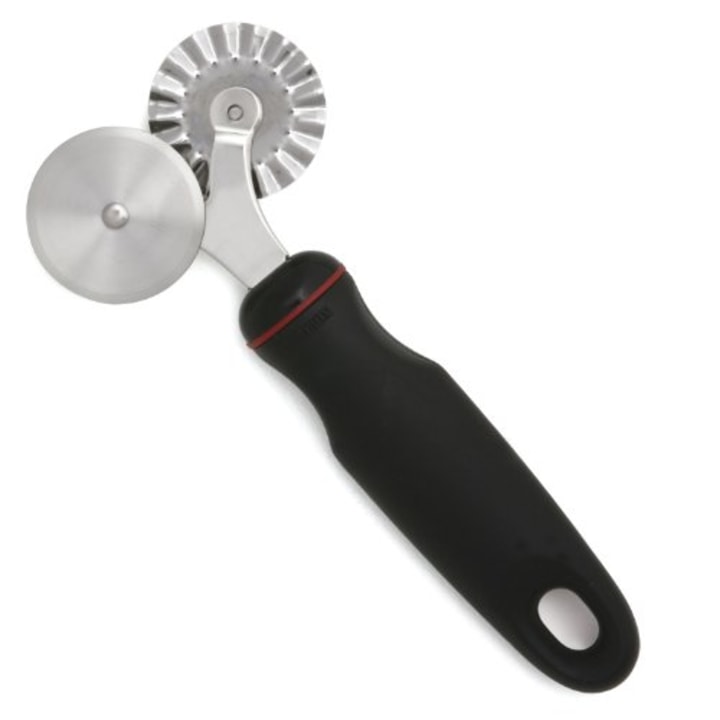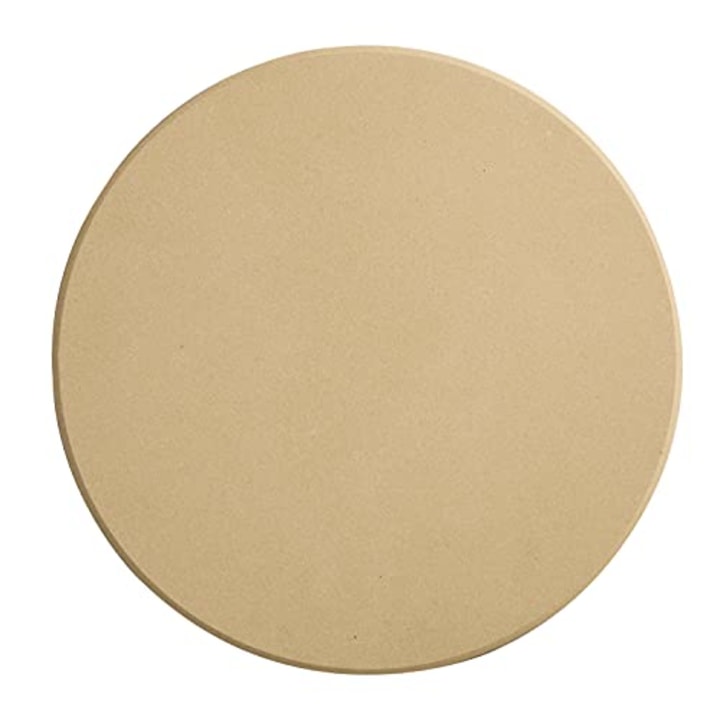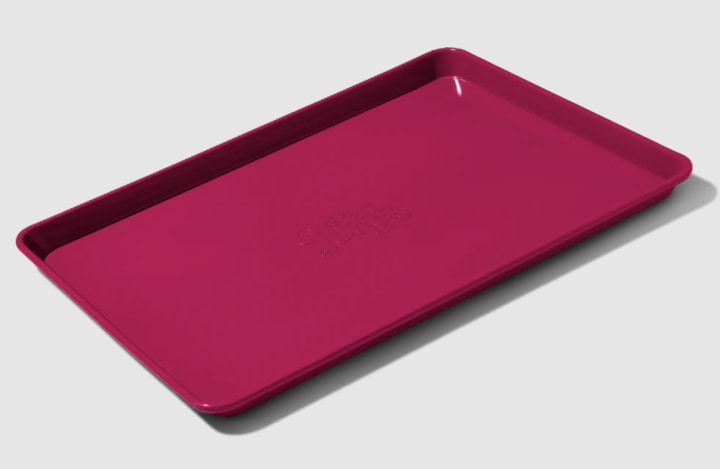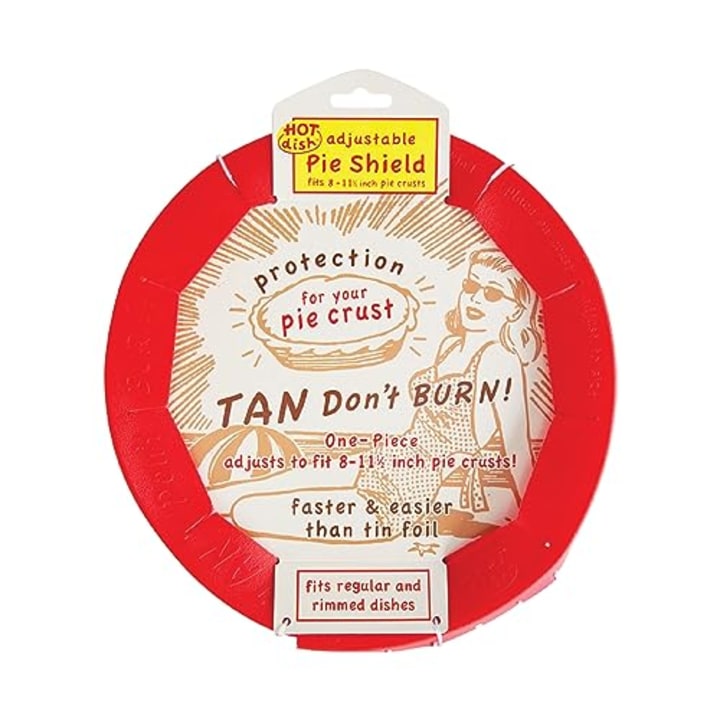No dessert spread is complete without a pie, whether it’s apple, pumpkin or another seasonal variety. You can purchase a pre-made pie, but baking your own is so much more satisfying — plus, it gives you bragging rights at the dinner table. But where do you begin, and what tools do you need to whip up a golden-brown masterpiece?
We talked to professional bakers to get the lowdown on making a homemade pie, and what to know before getting your hands dirty in the kitchen. Experts also shared tools you may find helpful throughout the baking process, as well as tips for making pies in advance and storing leftover slices.
SKIP AHEAD Make the dough | Make the filling | Roll out the dough | Add to a pie dish | Fill and decorate | Bake | Let it rest | Slice and serve
How to bake a pie, step-by-step
The intricate pie baking process is doable regardless of your experience level. We’ll walk you through each step, sharing helpful baking tools and tips along the way. All products are either tried-and-true Select staff favorites, recommended by experts or highly-rated options.
To help you visualize the process, we’ll use apple pie as an example throughout — an ideal choice if you’re struggling to make one. Grocery delivery platform Instacart tells us that according to pie sales data between October 2022 and September 2023, apple took the top spot, followed by pumpkin, key lime, cherry and lemon meringue.
Step one: Make the pie dough
Basic pie dough — like the kind you’d usually make for an apple pie — is typically butter-based and should result in a flakey yet tender crust. It’s composed of four or five ingredients: all-purpose flour, unsalted butter, a couple splashes of ice water, a pinch of kosher salt and, sometimes, a little bit of sugar.
There are dozens of pie dough recipes available online and in cookbooks — while they may specify different ingredient ratios, they’re generally similar. Some recipes make enough dough for a single-crust pie (those that only have crust on the bottom), while others make enough for a double-crust pie (those that have crust on the top and bottom). Keep in mind that you don’t always have to go with a traditional pie crust. For example, I always make pumpkin pie in a graham cracker crust and chocolate pudding pie in an Oreo cookie crust.
Below are a few helpful tools experts recommend using while making pie dough.
Digital food scale
You can either measure ingredients by weight or by volume while baking. Measuring by weight involves using a scale — while baking pie dough, you’d weigh solid ingredients like flour and butter in ounces or grams, and liquid ingredients like water in milliliters or fluid ounces. Measuring by volume involves using measuring cups — you weigh liquid and solid ingredients in teaspoons, cups, tablespoons, etc.
Zoë François, pastry chef and host of Zoë Bakes on the Magnolia Network, thinks all baking should be done using a scale. “It makes the process more consistent and, once you’re used to using it, I find it much easier than dealing with measuring cups,” she says.
Escali F115 Compact Kitchen Scale
In my experience, Escali’s foldable kitchen scale takes up very little storage space. Its platform opens from 2.6 inches to 7.5 inches wide, allowing me to adjust it based on what type of bowl, plate or cup I’m measuring ingredients in. While making pie dough, for example, I open the scale’s platform to its widest point since I measure ingredients directly in my mixing bowl. It has a tare button and a mode button, which allows you to select the unit you want measurements displayed in. After five minutes of inactivity, the scale — which has a maximum capacity of 11 pounds — automatically turns off.
Stainless steel mixing bowls
Once you’ve gathered and portioned out your ingredients, you can start bringing the dough together. Lauren Ko, founder of and pie designer at Lokokitchen, says you can save time by using a food processor or stand mixer.. However, all the experts we spoke to prefer making pie dough by hand. “I like to get my hands in the dough so I can feel what’s going on, but people should do what’s most comfortable,” François says.
While making pie dough by hand, Lisa Ludwinski, owner and head baker at Sister Pie in Detroit, Michigan, likes using stainless steel mixing bowls. They’re durable, sturdy and can withstand a lot of action, so you don’t have to worry about damaging them while baking, she says. Stainless steel also helps ingredients stay cold — cold dough is easier to roll out and work with, and it results in a flakier crust, Ludwinski says.
Cuisinart Stainless Steel Mixing Bowl Set
This dishwasher-safe set comes with three bowls in various sizes, as well as lids that can come in handy. For example, if your dough starts to get warm, cover the bowl with its lid and stick it in the refrigerator for a few minutes. Ludwinski also recommends covering pie dough and letting it rest in the refrigerator for a few hours before you roll it out. Pie dough keeps well, so you can make it up to three days before the rest of the desert, according to experts.
Silicone spatula
Ko always keeps a silicone spatula on hand while making pie dough. It’s flexible so she can scrape off the sides of her mixing bowl and make sure ingredients don’t get stuck to the bottom.
GIR Ultimate Silicone Spatula
GIR’s dishwasher-safe baking utensils are some of my favorite to use. They’re made from silicone, a naturally nonstick material that doesn’t scratch cookware, in my experience. The brand’s spatula is stiff enough to turn thick dough but flexible enough to bend while I’m scraping the sides of my mixing bowl. I find the Ultimate Spatula to be best for mixing thick batters and turning doughs since it’s one of GIR’s longer, wider options.
Bench scraper
Ludwinski says a bench scraper is particularly helpful for cutting butter into pie dough, which involves breaking down large chunks of butter and working them into dry ingredients. Since your hands can get warm and melt butter while bringing the dough together, using a bench scraper also helps you move it around without potentially compromising its texture or consistency, François says.
OXO Good Grips Multi-Purpose Scraper and Chopper
OXO’s dishwasher-safe bench scraper has a tall, stainless steel blade that keeps your hands away from food, and a large, rounded, non-slip handle. There are also quarter inch markings on the blade if you need to measure ingredients before cutting them.
Pastry blender
A pastry blender also cuts butter into pie dough, and Ludwinski recommends using it after first going in with a bench scraper. The bench scraper helps you chop up a large portion of butter into smaller pieces, and the pastry blender works the butter into the dry ingredients.
Spring Chef Stainless Steel Dough Blender
Available in medium (3 inches wide) and large (4 inches wide) sizes, this dough blender has five thick stainless steel blades to cut through cold butter. Its handle is also covered in soft rubber for a comfortable grip. To clean the dough blender — which has a 4.7-star rating from 23,204 reviews on Amazon — you’ll have to hand wash it, according to the brand.
Step two: Make the pie filling
There are dozens of pie fillings you can add to your crust, including fruit, custard, cream and even savory fillings like chicken pot pie. The filling you choose dictates what ingredients and kitchen tools you’ll use — be sure to read your recipe before baking to ensure you have all the necessary supplies.
Apple pie filling, for example, requires ingredients like apples, cinnamon, flour and sugar, and tools like a knife, cutting board, mixing bowl and spatula, plus a deep skillet if your recipe requires a cooked filling before adding it to the crust. Pumpkin pie, however, is made with ingredients like pumpkin puree, heavy cream and cornstarch, which you blend together with a hand mixer or blender.
Step three: Roll out the pie dough
Before rolling out your dough, decide if you’ll want to save some of it to decorate the top of the pie. If so, divide the dough into different sections, designating one for the top of the pie and one for the bottom. Using a bench scraper makes it easy to divide up the dough, Ludwinski says. Apple pie typically has a top crust or lattice crust, but you can always mix it up.
Tapered rolling pin
While you can use common household objects like wine bottles or canned beans, rolling pins provide a more even result. They come in several different styles, but our experts prefer the lighter tapered type. Its shape resembles a batton and it’s wider in the middle with narrower ends. Ludwinski also finds tapered rolling pins easier to maneuver with precision.
Regardless of the type of rolling pin you use, your dough should be about ⅛-inch thick once it’s rolled out, experts say. It will likely tear or rip if it’s any thinner, and if it’s much thicker, the crust may not bake all the way through.
J.K. Adams French Dowel Rolling Pin
This tapered rolling pin is made from maple wood and measures 20 ½ inches long by 1 ½ inches wide. It has to be hand washed and has a 4.7-star average rating from 871 reviews on Amazon.
Marble pastry slab
A marble counter is an ideal surface to roll dough out on because it stays cool, even during the warmer months, François says. Wood butcher-block counters work well, too — they provide a smooth, cool surface to work on. But if you don’t have either at home, you can purchase a board made from either material.
Thirteen Chefs Villa Acacia Marble Cutting Board
Beyond the large surface area, this marble board sits on six rubber feet that raise it an inch above the countertop and help prevent turbulence as I’m rolling out pie dough. You can purchase the board in four sizes: 12-by-6 inches, 16-by-12 inches, 18-by-18 inches and 20-by-16 inches. Plus, it’s easy to clean with a little dish soap and warm water.
Step four: Place the dough in a pie dish to form the bottom crust
The material your pie dish is made from affects how the dessert bakes. While an apple pie — or any pie for that matter — can be cooked in a glass, aluminum or ceramic dish, we asked experts about each type’s strengths and weaknesses so you can decide which you prefer.
Aluminum pie dish
At Sister Pie, Ludwinski uses aluminum pans. Aluminum can withstand temperature changes well, like if you take a frozen pie crust from the freezer and put it directly into the oven, she says. Aluminum is also a great heat conductor, which helps ensure that the bottom of the pie crust gets crispy while baking, Ludwinski adds.
USA Pan Aluminized Steel Pie Pan
Ko says using USA Pan’s steel pie dish always helps her achieve a crispy crust. The bottom of the pan has a ribbed texture, which helps air circulate around the base of the pie to encourage even cooking, according to the brand. The 9-inch pan must be hand-washed and it’s oven-safe up to 450 degrees Fahrenheit.
Glass pie dish
The main benefit of glass pie pans is that they make it easy to see whether the bottom of your dessert is fully baked, Ko says. However, glass is thicker than aluminum, so it might take longer for the bottom of the pie crust to get crispy, François says.
OXO Good Grips Glass Pie Plate with Lid
This 9-inch glass dish, which comes with a lid, is made from thermal-shock-resistant borosilicate glass, meaning it can go from the freezer or refrigerator to the oven without cracking, according to the brand. The lid also has built-in vents so heat and moisture can escape, preventing condensation from building up on the pie. The pie dish — which has a 4.7-star average rating from 15,464 reviews on Amazon — is oven-safe up to 450 degrees Fahrenheit and it’s dishwasher-safe, as is its lid.
Ceramic pie dish
Ceramic pie dishes bake similarly to glass options, François says. As long as you’re willing to wait a little longer for the bottom of the pie to get crispy, a ceramic dish is worth using if you plan on serving the dessert in it — they’re often the most decorative and a great gift for bakers during the holidays.
Great Jones Sweetie Pie
I gifted myself this Great Jones ceramic dish a few years ago because I wanted a beautiful pan to bake and serve my pies in during the holidays. It’s deep so I can pack a mountain of fruit fillings into my crust, and I love that the wavy rim guides me as I crimp the edges. The pie dish is oven-safe up to 500 degrees Fahrenheit and dishwasher-safe, though it’s also easy to hand-wash.
Step five: Pour the filling into the crust and decorate the top of the pie
The top of your pie is a black canvas, and how you decorate it can become your signature move as a baker. “There are no rules, and it’s a great place to get creative,” François says. You can keep it simple with a plain top crust and crimped edges, try your hand at an intricate lattice pattern or use cookie cutters to cut out shapes and lay them atop the pie. If you want to abandon a top crust entirely, adding a crumble is always an option, as is keeping the top bare and decorating it with whipped cream, chocolate shavings and candied nuts or fruit before serving.
Pastry wheel
A ruler and a pastry roller can help you cut straight lines in pie dough if you’re making strips for a lattice or braided design, Ko says. However, when she first started dabbling in pie art, Ko relied on a sharp knife and the edge of a cookie sheet to cut straight lines in dough.
Norpro Grip-EZ Pastry Wheel
This dishwasher-safe, double-headed pastry wheel has one fluted wheel and one flat wheel, allowing you to cut dough strips with scalloped or straight edges. The wheels have stainless steel blades, and the tool’s grip is covered in soft non-slip rubber. It also has a 4.7-star average rating from 4,892 reviews on Amazon.
Step six: Bake the pie
Once the oven reaches your recipe’s specified temperature, it’s time to bake. You may also be asked to bake the pie at a high temperature for a few minutes before lowering it for the rest of the baking period, or to rotate the pie halfway through so that all sides are evenly baked. I set timers on my phone, watch or Amazon Echo Dot while baking so I don’t forget about what’s in the oven.
Experts say the below items are useful once you put your pie in the oven — some encourage even baking while others serve as signals your pie is fully cooked. They’re all optional, so you might want to try one or two when you bake your first pie, and then adjust from there based on preferences you develop.
Baking stone
No matter what material her pie dish is made from, François preheats a baking stone and bakes the pie on top. The baking stone absorbs heat from the oven and evenly transfers it across the pie dish, helping the bottom crust get crispy and cook all the way through, she says.
Honey-Can-Do Round Pizza Stone
Since this pizza stone is 14 inches in diameter, it gives you plenty of room for your pie dish (most are 9 or 10 inches in diameter). It has raised edges on the bottom, just barely raising the stone off whatever surface it’s resting on to help you pick it up. The stone — which has a 4.5-star average rating from 353 reviews on Amazon — is oven-safe up to 500 degrees Fahrenheit. To clean it, just rinse it and let it air dry.
Sheet pan
Placing your pie dish on top of a sheet pan while it’s baking will allow the sheet pan to catch anything that may bubble over, like juice from fruit, Ludwinski says. It also helps you rotate the pie in the oven, or remove it when it’s done baking.
Great Jones Holy Sheet
Because Great Jones’ sheet pan is covered in a nonstick ceramic coating, I never worry about chocolate, sugar or fruit juice getting stuck to it. I place my pie dish on top in the oven, and if anything drips while baking, I easily scrub it off after. The half-size sheet pan is made from aluminized steel and is oven-safe up to 450 degrees Fahrenheit, as well as dishwasher-safe, although I hand-wash it. The sheet pan comes in five vibrant colors, so I also use it as a serving tray too.
Pie bird
A pie bird allows steam to escape from a double-crusted pie while the dessert is baking, François says. It also lets you know when the pie is cooked through, although you can also rely on visual cues, like the filling bubbling through the center, Ludwinski says.
Le Creuset Stoneware Pie Bird
Similar to the brand’s Dutch ovens, Le Creuset’s pie bird is made from stoneware and coated in a non-porous glaze, so pie filling won’t stain it and it won’t absorb flavors, according to the brand. This pie bird is oven-safe up to 500 degrees Fahrenheit and dishwasher-safe. It also has a 4.8-star average rating from 1,240 reviews on Amazon.
Pie crust shield
You may notice that the edges of your pie start to get golden brown and crispy faster than the rest of the desert. To prevent them from getting too brown for your liking, add a crust shield, which covers the perimeter of the pie and protects the edges while the rest of the dessert bakes.
Talisman Designs Pie Baking Crust Shield
In addition to making your own from folded tin foil, brands offer reusable silicone crust shields like this dishwasher-safe one, which has a 4.4-star average rating from 4,660 reviews on Amazon. You can adjust the shield’s diameter from 8 to 11.5 inches so it perfectly fits your pie dish’s rim. Once you decide on a diameter, you slide the lock into the closest notch so the shield stays put in the oven.
Step seven: Let the pie rest
Never cut into your pie while it’s hot, Ludwinski says. After taking it out of the oven, let it cool at room temperature for at least four hours so the filling fully sets. If you slice into a pie when it’s hot, the filling will be too runny and it won’t stay together when you serve it. Don’t cool your pie in the refrigerator — you want the butter in the crust to stay soft, and it will stiffen up in the fridge, ruining the texture.
Cooling rack
Experts recommend placing your pie on a cooling rack after it comes out of the oven. The elevated wire rack has an open grid pattern, and it allows air to circulate around the entire baked good, helping it cool quickly.
Hiware Cooling Racks
I believe you can never have too many cooling racks, especially around the holidays if you’re cooking and baking a variety of dishes and need space for all of them. Hiware’s cooling racks come in a pack of two and are available in three sizes: 8.5-by-12 inches, 10-by-15 inches and 12-by-16 inches. They stand on four feet and are built with two supportive crossbars, so you can place heavier cookware on top without worrying about the racks breaking. The racks are dishwasher-safe and have a 4.7-star average rating from 13,046 reviews on Amazon.
Step eight: Slice and serve
After all that prepping, baking and waiting, it’s finally time to slice and serve your pie. I find it easiest to first cut into the pie with a sharp chef’s knife, and then lift it out of the dish with a pie server or offset spatula, like the kind you’d use to frost a cake. Ludwinski thinks pie tastes best when served at room temperature, and while it’s delicious by itself, you can also add ice cream, whipped cream or some confectioner’s sugar on top.
Meet our experts
At Select, we work with experts who have specialized knowledge and authority based on relevant training and/or experience. We also take steps to ensure that all expert advice and recommendations are made independently and with no undisclosed financial conflicts of interest.
- Zoë François is a pastry chef, baker and host of Zoë Bakes on the Magnolia Network. She trained at the Culinary Institute of America and also teaches culinary classes. François has authored numerous cookbooks, including “Zoe Bakes Cakes.”
- Lisa Ludwinski is the owner and head baker at Sister Pie in Detroit, Michigan. She launched Sister Pie out of her parent’s Milford kitchen in 2012 and opened the doors to the pie shop in April 2015. Ludwinski is also the author of the Sister Pie cookbook.
- Lauren Ko is an artist, self-taught home baker and founder of the Instagram account @lokokitchen. She’s also the author of the New York Times best-selling cookbook, “Pieometry.” Ko is known for her colorful, geometric, contemporary pie art, and her iconic signature spoke design has been dubbed the “modern lattice.”
Why trust Select?
Zoe Malin is an associate updates editor at Select who writes about kitchen tools, including cookware sets, meal prep containers, ice cream makers and more. For this article, she interviewed three experts about how to make pie and tools they find helpful while doing so.
Catch up on Select’s in-depth coverage of personal finance, tech and tools, wellness and more, and follow us on Facebook, Instagram, Twitter and TikTok to stay up to date.
